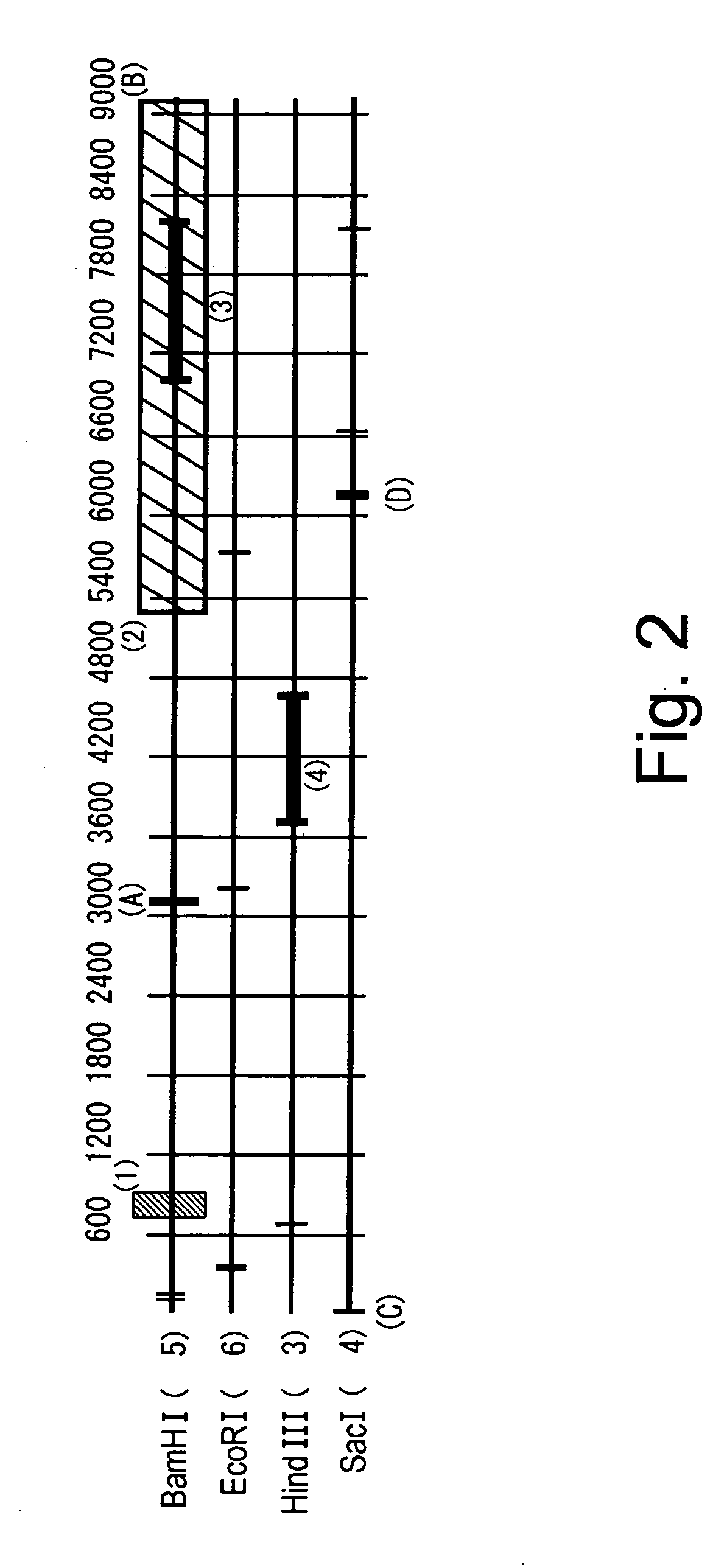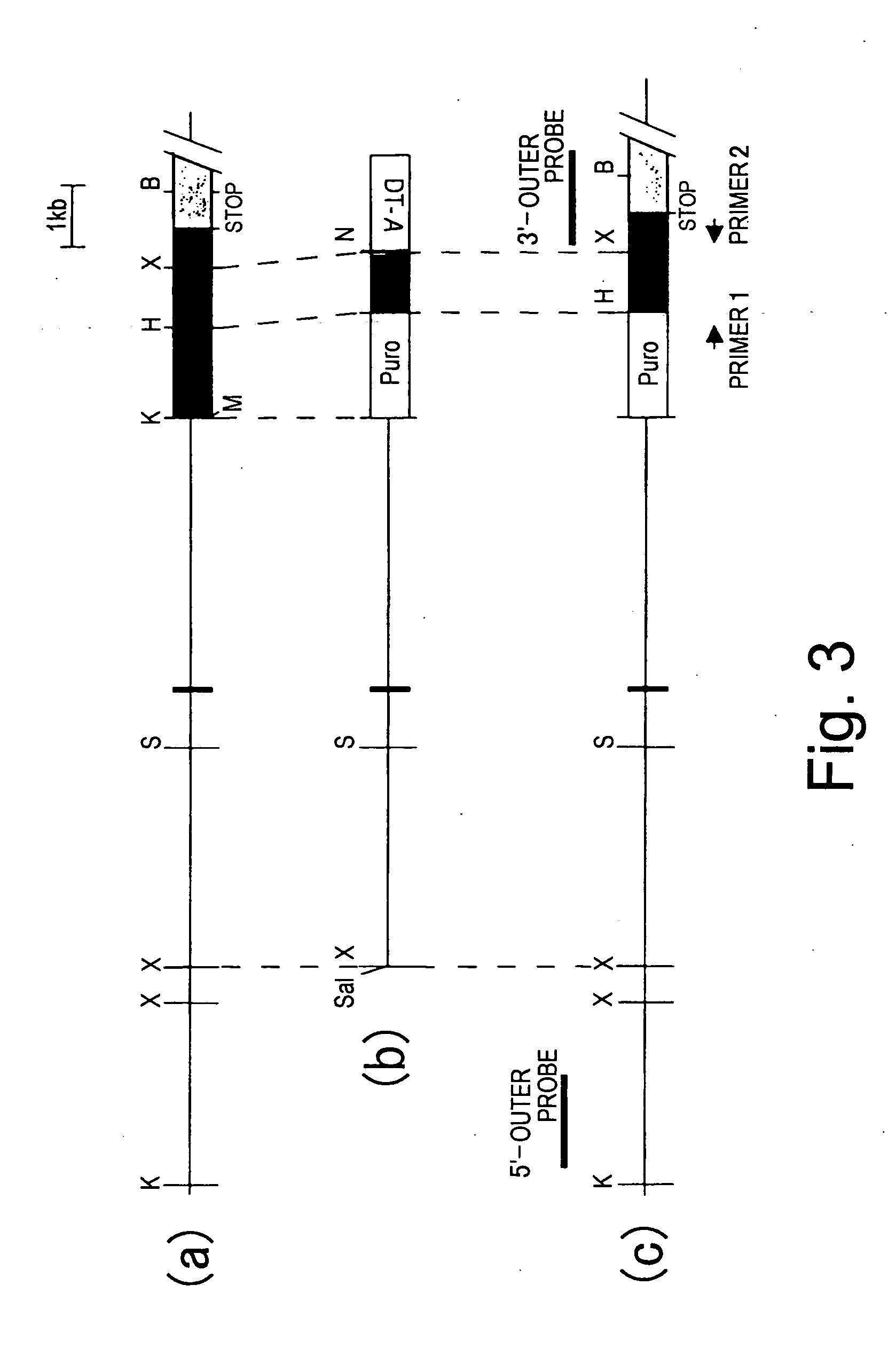Swine rag-1 gene and utilization thereof
a technology of porcine rag-1 and rag-1 gene, applied in the field of porcine rag-1 genes, can solve the problems of severe combined immunodeficiency diseases, lack of acquired immunity, etc., and achieve the effects of suppressing expression, and suppressing the function of rag-1 gen
- Summary
- Abstract
- Description
- Claims
- Application Information
AI Technical Summary
Benefits of technology
Problems solved by technology
Method used
Image
Examples
example 1
Construction of a Targeting Vector for Porcine RAG-1 Gene Knockout
[0071] First, the isolation of porcine RAG-1 cDNA was attempted. At this time, known cDNA could not be obtained. Furthermore, after detailed investigation of information on known mouse and human nucleotide sequences, it was determined that porcine RAG-1 cDNA might not cross-hybridize with probes derived from other species. Therefore, reverse transcription PCR from porcine mRNA was performed. First, four PCR primers known for their use for the human RAG-1 gene were used (Chun et al., Cell (1991) 64: 189-200); however, PCR product from swine was not obtained. Therefore, as the result of the trial and error production of a large number of primers, using mice and human nucleotide sequence consensus regions as leads, a 1161 bp cDNA fragment (the region from 7010 bp to 8171 bp in the attached 9.1 Kb nucleotide sequence) with 88% homology to the human RAG-1 cDNA nucleotide sequence was cloned. A porcine thymus cDNA library ...
PUM
 Login to View More
Login to View More Abstract
Description
Claims
Application Information
 Login to View More
Login to View More - R&D
- Intellectual Property
- Life Sciences
- Materials
- Tech Scout
- Unparalleled Data Quality
- Higher Quality Content
- 60% Fewer Hallucinations
Browse by: Latest US Patents, China's latest patents, Technical Efficacy Thesaurus, Application Domain, Technology Topic, Popular Technical Reports.
© 2025 PatSnap. All rights reserved.Legal|Privacy policy|Modern Slavery Act Transparency Statement|Sitemap|About US| Contact US: help@patsnap.com



